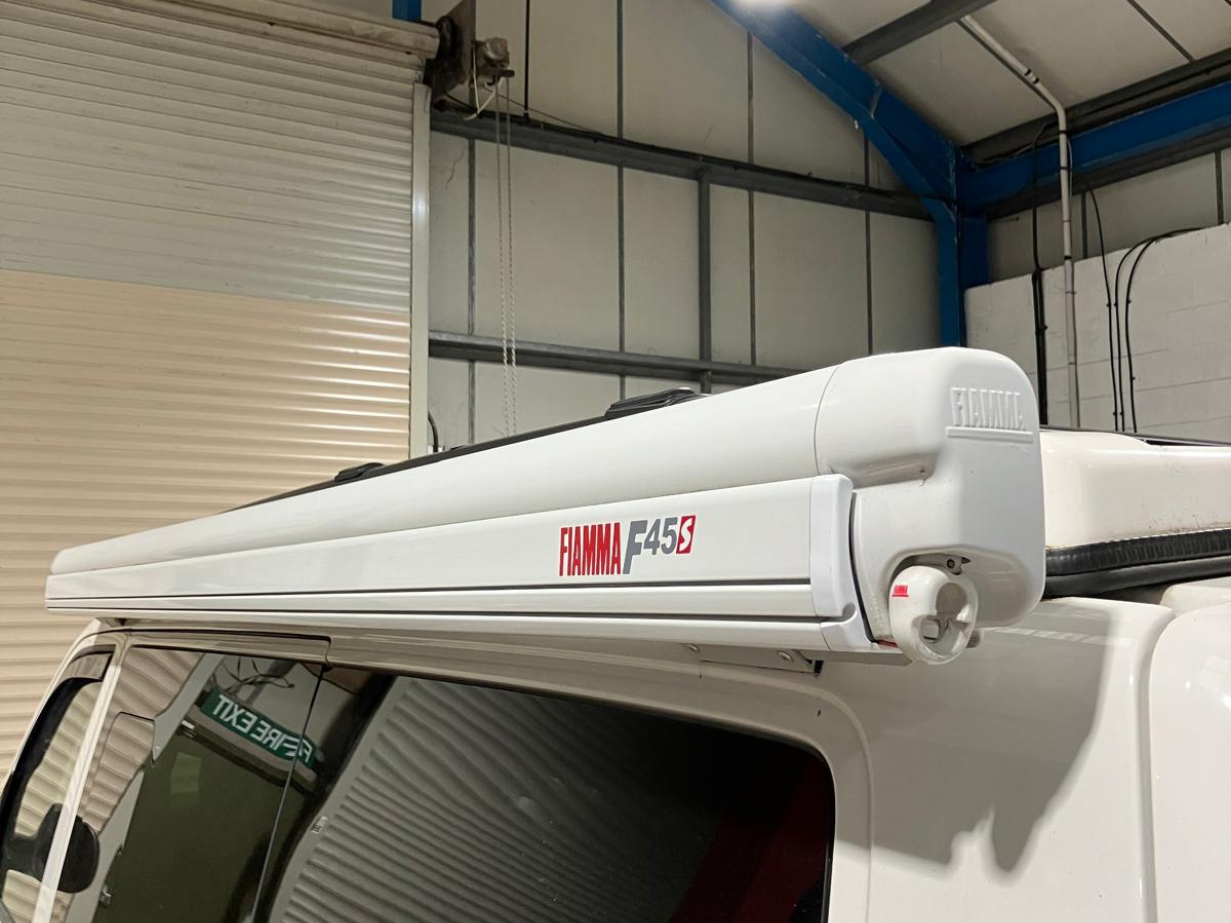
The Van & Bus Guide to Campervan Awnings and Awning Rails
Types of Awnings
There are several different types of awnings available for your campervan, from simple lightweight sunshades, that are fitted each time you set up camp, driveway awnings, which are more like a traditional tent, but that attach to your camper, through to the cassette or wind out awnings which stay affixed (albeit in a stowed position) to your van permanently.
Before you go ahead and purchase an awning it’s probably a good idea to consider what you want to use that awning for. All awnings are designed to give you some protection from the elements, although some will only offer protection from sunlight or light rain, whilst others should be as good as any tent at keeping the worst of the weather at bay.
There are also various awning rails on the market, which enable you to securely attach your awning to your van, unless of course you opt for the cassette type awning, which remains in place permanently.
Let’s go through the various types of awnings and look at some of the advantages and disadvantages of each.
Cassette / Wind Out Awning – These types of awnings are permanently attached to your van, so on arrival at your camp, it’s just a case of winding out the canopy, unfolding the legs and staking a few guide ropes. Sounds great, but they are not without their disadvantages.
Firstly, they are quite a chunky bit of kit that lives on your van. Weighing up to 50kg, they aren’t exactly what you would call discrete, especially on a small van like a VW Transporter or a Transit Custom.
Although, side walls can be purchased for this type of awning, in their standard form, they aren’t going to offer much protection from the elements, especially the wind. Also, be careful if leaving unattended for any periods of time, in case the wind does pick up. We have seen a fair few damaged awning and vans over the years! Starting at around £700, they are also a costly addition.

Sun Canopies – As the name suggests Sun Canopy Awnings are usually fully waterproof and provide shade and protection from wet weather. There is a large choice of canopies from all the major manufacturers such as Vango and Kampa, but also from lots of more specialised manufacturers you may not have heard of before. The beauty is their simplicity as they are all designed to slide straight into a C-channel awning rail, Reimo multi-rail etc, although some might have a different attachment method. Offering pretty much the same level of protection from the elements as the ‘wind out’ awning type, they are a much cheaper alternative, however they will take a significant amount more time to erect and deploy. When not in use, they will also need to live in the van, taking up storage space.

Drive Away Awnings - A drive away awning is, basically a tent which attaches to the side of your campervan. As with the sun canopy awnings, they attach to a C-channel awning rail, already fitted to your van. This type of awning can vastly increase your living, and storage space, whilst providing you the same level of shelter from the elements as any good quality tent.
Other than the weatherproof space, the other major advantage is that as long as you are using an appropriate fixing kit to attach your awning to the C-channel on the van (the kit being a figure of 8 piece of plastic and a double sided beaded keder strip). You can easily drive away your van leaving your awning free standing for your return when it can be simply re-attached.
Drive Away Awnings come in all shapes and sizes. Some are assembled with poles like a traditional tent, whilst others have an inflatable structure. Some are relatively small, whilst others offer multiple compartments within. The cost can therefore vary significantly. All will take a reasonable amount of time to set up and deploy, so these are probably best suited to longer stays on site, rather than when passing through on a flying visit. Also consider that when travelling to and from your camp, this type of awning will be a bulky bit of kit to transport around with you.

Types of Awning Rails
As we have already touched on, other than the permanently attached wind out awnings, all other awning types will need to be attached to the van in some way. The best way to do this is by some kind of C-channel awning rail. The simplest version of this, is an extruded aluminium strip, that is mounted in the gutter rail of the van. If your van has a pop top fitted, then check whether this type is suitable, as most pop tops cover the gutter rail. The Stealth B2 pop tops, are however compatible with the dog legged version of this rail.


In addition, there is also the Reimo style awning rail. Basically, still an extruded C-channel, but it’s designed to be a visible accessory that runs down the side of the vehicle. An altogether chunkier item, it also serves as a drain, deflecting rainwater away and ducting it down the side of the windscreen. Compatible will all pop top types (probably why it was developed in the first place), these rails are also a very popular option. Compared to the simpler rail, these are more expensive and do require some fixings (screws) and bonding to the side of the vehicle.
It should also be noted that most Cassette/Wind Out Awnings also have a C-channel integrated into their housing, so if for example you wanted to use a drive away awning, rather than deploying the wind out canopy, this is still possible without needing to fit another rail.
See our range on the website shop page: https://www.vanandbus.co.uk/campervan-parts-shop/




